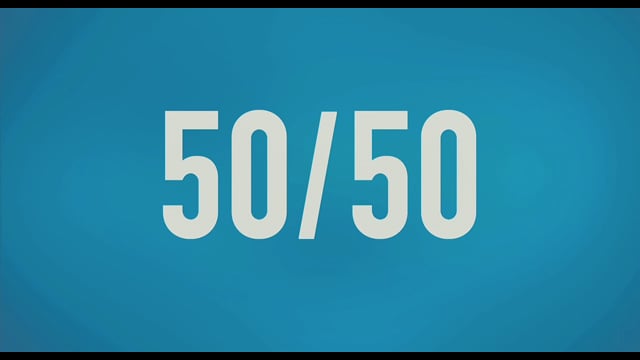New York is not considered a 50-50 custody state. In New York, the courts determine custody arrangements based on the best interests of the child. This means that the court will consider a variety of factors when determining which parent should have primary custody, and how much time the other parent should have with the child. These factors may include the child’s age and developmental needs, the parent’s work schedules, the child’s relationship with each parent, and any evidence of abuse or neglect.
The court will also consider the child’s preference if the child is of sufficient age and maturity to express a meaningful preference. The court also will consider whether there is a history of domestic violence or other forms of abuse, which is considered a very important factor in custody determination in New York.
Child Custody In New York
While there is no set formula for determining custody in New York, the court will often award primary custody to one parent, with the other parent having regular visitation rights. This is known as “sole custody” and “joint custody” respectively. If the court awards one parent sole custody, the other parent may be granted “parenting time” or “visitation” which is a specific schedule for spending time with the child.
In some cases, the court may award joint custody, which means that both parents have equal legal rights and responsibilities for the child, and will make important decisions about the child’s upbringing together. However, even in cases of joint custody, one parent may be designated as the “primary residential parent” and the child will live primarily with that parent, while the other parent will have regular visitation.
It is important to note that, while the court’s primary goal is always to act in the best interests of the child, the court’s decision is not always final, and can be changed if there is a significant change in circumstances. Custody arrangements can be modified if the court determines that it is in the best interests of the child to do so.
In conclusion, New York is not a 50-50 custody state. The court will determine the best custody arrangements based on the best interests of the child, considering a variety of factors, including the child’s age and developmental needs, the parent’s work schedules, the child’s relationship with each parent, and any evidence of abuse or neglect. The court may award primary custody to one parent, with the other parent having regular visitation rights or joint custody, where both parents have equal legal rights and responsibilities for the child.
Aslo Read: HOW TO GET FULL CUSTODY OF A CHILD AS A MOTHER IN NY

How does custody work in New York?
Custody arrangements in New York are determined based on the best interests of the child. This means that the court will consider a variety of factors when determining which parent should have primary custody, and how much time the other parent should have with the child.
The first step in determining custody in New York is for the parents to try to come to a mutually agreed upon custody arrangement. If the parents are able to agree on a plan, they can submit it to the court for approval. If the parents are unable to reach an agreement, the court will make a determination based on the evidence presented.
When making a custody determination, the court will consider a variety of factors, including:
- The child’s age and developmental needs
- The parents’ work schedules
- The child’s relationship with each parent
- Any evidence of abuse or neglect
- The child’s preference, if the child is of sufficient age and maturity to express a meaningful preference
- Whether there is a history of domestic violence or other forms of abuse, is considered a very important factor in custody determination in New York.
The court will also consider the parent’s ability to provide for the child’s physical, emotional, and educational needs, and their willingness to foster a positive relationship between the child and the other parent.
If the court determines that it is in the best interests of the child, it may award primary custody to one parent, with the other parent having regular visitation rights. This is known as “sole custody” and “joint custody” respectively. If the court awards one parent sole custody, the other parent may be granted “parenting time” or “visitation” which is a specific schedule for spending time with the child.
In some cases, the court may award joint custody, which means that both parents have equal legal rights and responsibilities for the child, and will make important decisions about the child’s upbringing together. However, even in cases of joint custody, one parent may be designated as the “primary residential parent” and the child will live primarily with that parent, while the other parent will have regular visitation.
It is important to note that, while the court’s primary goal is always to act in the best interests of the child, the court’s decision is not always final, and can be changed if there is a significant change in circumstances. Custody arrangements can be modified if the court determines that it is in the best interests of the child to do so.
In addition to determining custody and visitation, the court may also make orders for child support, which is the financial support provided by one parent to the other for the care and upbringing of the child. The court will use the Child Support Standards Act (CSSA) to calculate the non-custodial parent’s child support obligation. The CSSA is a formula that takes into account the income of both parents, the number of children, and the amount of time the children spend with each parent.
In New York, the courts also may order a custody evaluation, which is a process in which a mental health professional, such as a psychologist or social worker, conducts an investigation to determine what custody arrangement would be in the best interests of the child. The evaluator will typically interview the parents, the child, and any other relevant people, such as teachers or therapists, and may also observe the child in different settings. The evaluator will then provide a report to the court, which may be used as evidence in the custody case.
In conclusion, the court will determine the best custody arrangements based on the best interests of the child, considering a variety of factors, including the child’s age and developmental needs, the parent’s work schedules, the child





